From the Pierce Flickr site:

Pierce composite
thanks Martin
Mar 6
Posted by Admin in Fire Department News, Fire Service Photos, New Delivery | 1 Comment
From the Pierce Flickr site:
Pierce, Niles FD, IL, 38917-1

Pierce composite
thanks Martin
Tags: chicagoareafire.com, new fire engine for the Niles FD, Niles FD Engine 2, Niles Fire Department, Pierce Enforcer PUC pumper
Feb 17
Posted by Admin in Fire Department News, Fire Truck photos | No Comments
From RB:
Sneek peek – 38917 Niles 1st Enforcer
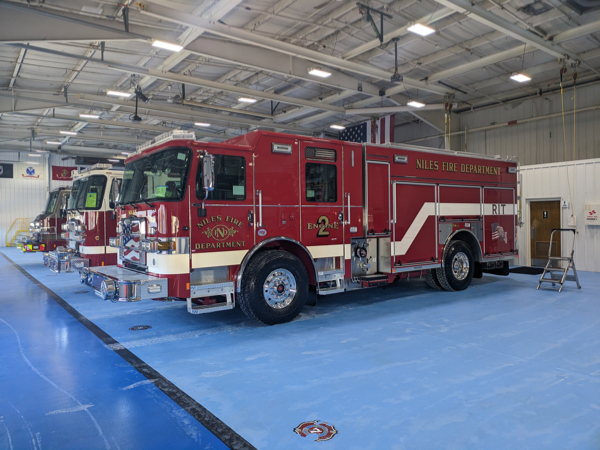
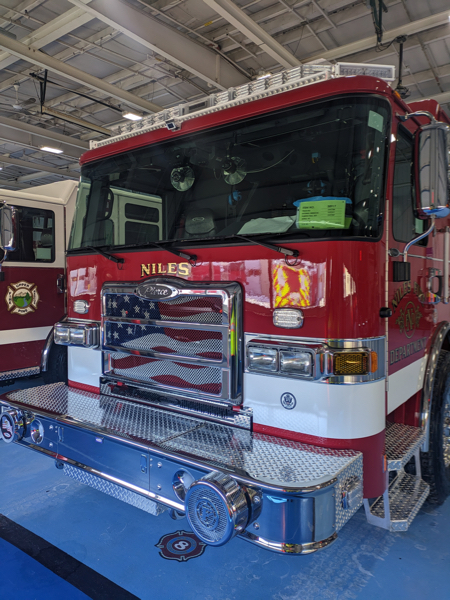
Tags: chicagoareafire.com, new fire engine for the Niles FD, Niles FD Engine 2, Niles Fire Department, Pierce Enforcer PUC pumper
Feb 14
Posted by Admin in Fire Department News, Fire Truck photos, New Delivery | No Comments
Completed photos of the new engine for Niles FD
Niles Engine 2
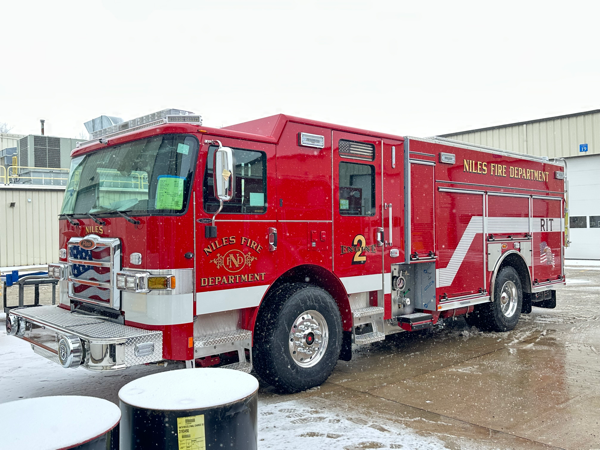
Josh Boyajian photo
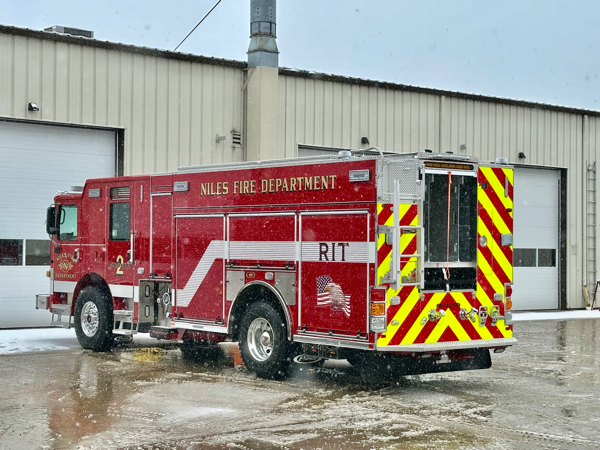
Josh Boyajian photo
Tags: chicagoareafire.com, new fire engine for the Niles FD, Niles FD Engine 2, Niles Fire Department
Excerpts from journal-topics.com:
Niles FD Acting Chief Richard Scipione
Acting Niles Fire Chief Robert Greiner notified village officials he was retiring immediately last Friday (Dec. 13), leading to the appointment of District Chief Rich Scipione as acting fire chief.
Greiner spent more than 24 years with the Niles Fire Dept. He has been a firefighter for 30 years.
Niles Mayor George Alpogianis said Greiner did not give a reason for stepping down. He said Greiner submitted his letter of resignation at 4:40 p.m. Dec. 13, to be effective at 5 p.m. that day.
Scipione has been a Niles firefighter since 2002. As district chief, part of Scipione’s duties was overseeing emergency medical service operations.
The village has contacted the Illinois Fire Chiefs Association to assist in the search for a permanent chief.
Greiner’s sudden retirement comes on the heels of the retirement of Chief Marty Feld on Sunday, Nov. 30 after more than 38 years as a Niles firefighter and chief since 2017. When Feld retired, Greiner was named acting chief.
Tags: chicagoareafire.com, District Chief Rich Scipione, Niles Fire Chief Marty Feld, Niles Fire Chief Robert Greiner, Niles Fire Department
Dec 9
Posted by Admin in Fire Department News, New Apparatus Order | 7 Comments
Excerpts from villageofniles.com:
New Business:
A. Fire Chief Feld informed the group that public works would be asking for board approval to purchase a 2028 fire engine at July’s 23rd Village Board Meeting. This engine is a part of the Village’s CIP for fiscal year 2029 and would be placing the 2015 Pierce engine into reserve status.
B. Fire Chief Feld informed the group that at the August 27th, 2024, Village Board Meeting, public works would be requesting a change order for the fire engine in production (Approved by the Village of Niles Board of Trustees meeting on April 27, 2022). The intent to purchase had a not to exceed $889,000 threshold. The pre-construction review has led to a price which is $6,060.00 dollars over the not to exceed amount. It was explained to the committee that there were 11 pages of changes/addition/deletions to the original proposal which resulted in the need for a change order of $6,060 dollars.
thanks Martin
Tags: chicagoareafire.com, new fire engine for the Niles FD, Niles Fire Department
Jun 25
Posted by Admin in Ambulance photos, Fire Department News, New Delivery | 8 Comments
From Niles FD facebook
Earlier this morning, a brand new ambulance was put in-service replacing Ambulance 3 which was nine years old and had over 125,000 miles on it. Our new Ambulance 3 has cutting edge suspension which will allow for a smoother ride for those transported in the patient compartment. Thanks to all those NFD members who worked tirelessly to bring Ambulance 3 from concept to fruition.
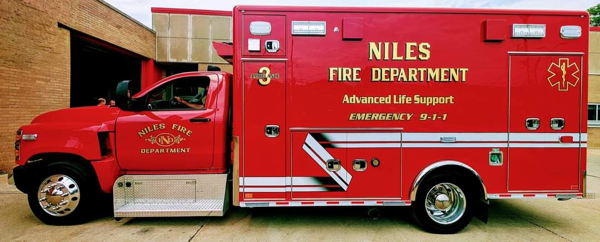
Niles FD photo
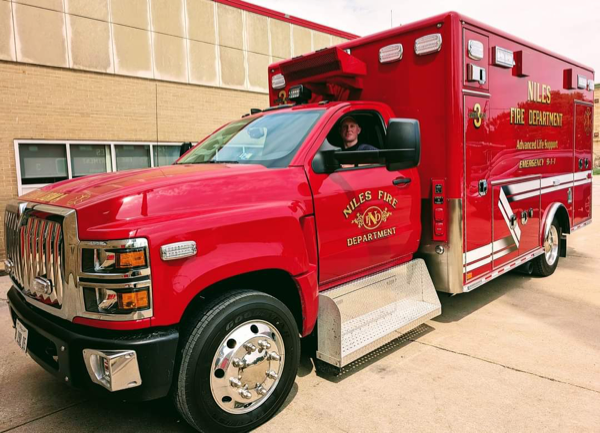
Niles FD photo
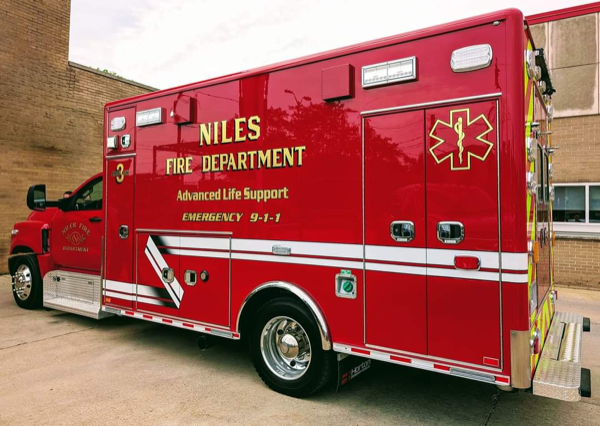
Niles FD photo
Tags: ambulance photos, chicagoareafire.com, new ambulance for Niles, Niles FD Ambulance 3, Niles Fire Department
Mar 24
Posted by Admin in Ambulance photos, Fire Department News, New Delivery | 2 Comments
From Foster Coach Sales on Facebook

Foster Coach Sales photo
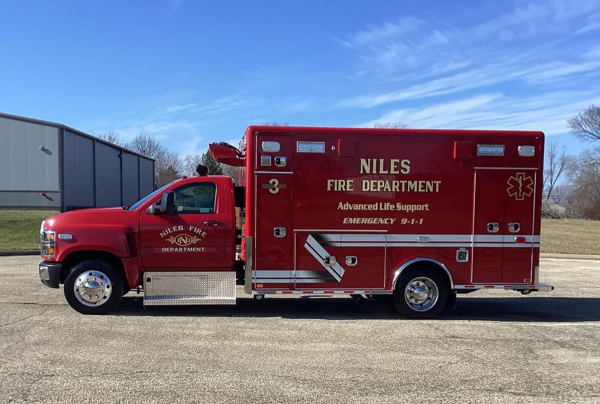
Foster Coach Sales photo
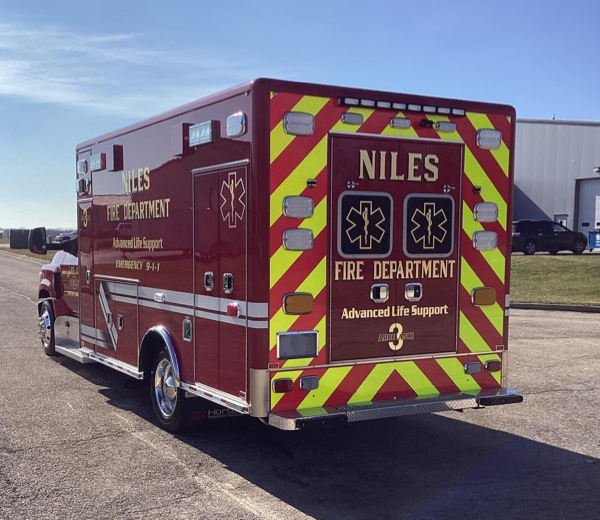
Foster Coach Sales photo
thanks Martin
Tags: ambulance photos, chicagoareafire.com, Foster Coach Sales, new ambulance for Niles, Niles FD Ambulance 3, Niles Fire Department
Excerpts from wgntv.com:
A man and his family had an emotional exchange recently afternoon with firefighters from the Niles Fire Department who saved his life two weeks ago.
On Dec. 22, Christopher Szafraniec was going about a normal day at work, when he suffered a heart attack on the job. 911 was called and firefighters arrived within minutes. Szafraniec’s heart stopped twice on the way to the hospital.
“After the first minute or two, we got a pulse back after we shocked the patient once. [The] patient woke up and we advised him what happened,” a firefighter said. “The second time, [the] patient did code in route to Lutheran general. We shocked him a second time, got a pulse back, and [he] was awake.”
Since his close call, Szafraniec said he has made an amazing recovery and credits the Niles firefighters for their quick actions during his medical emergency.
“The doctor was saying whoever was doing compressions saved my life,” Szafraniec said. “But to be able to come back and thank these men, it’s an honor.”
“Every doctor that came into the room reinforced you truly are a miracle,” added Patty Szafraniec, Christopher’s wife. “10% people make it through what he went through.”
Tags: cardiac save, chicagoareafire.com, Christopher Szafraniec, man thanks firefighters for saving his life, Niles Fire Department
Dec 15
Posted by Admin in Fire Department History, Historic fire apparatus, throwbackthursday | 6 Comments
This from Larry Shapiro for #TBT:

Larry Shapiro photo
Tags: #larryshapiro, #TBT, chicagoareafire.com, Larry Shapiro, larryshapiro.tumblr.com, larryshapiroblog.com, Niles FD Truck 2, Niles Fire Department, Niles Fire Department history, Pierce Lance TDA, shapirophotography.net, throw back thursday, throwbackthursday
Dec 4
Posted by Admin in Apparatus on-scene, Fire Department News, Fire Scene photos | 2 Comments
Some photos from Larry Shapiro of the Box Alarm fire near Des Plaines, 12-2-22

Larry Shapiro photo
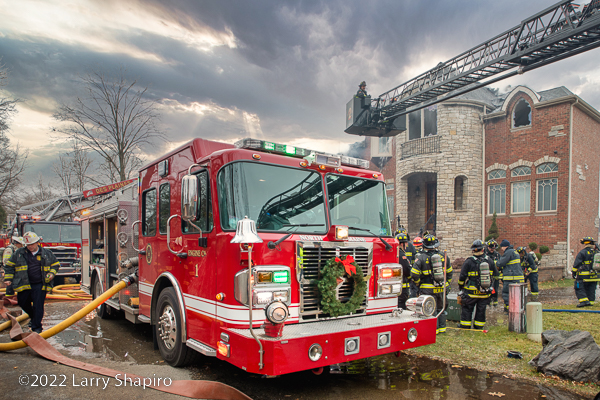
Larry Shapiro photo
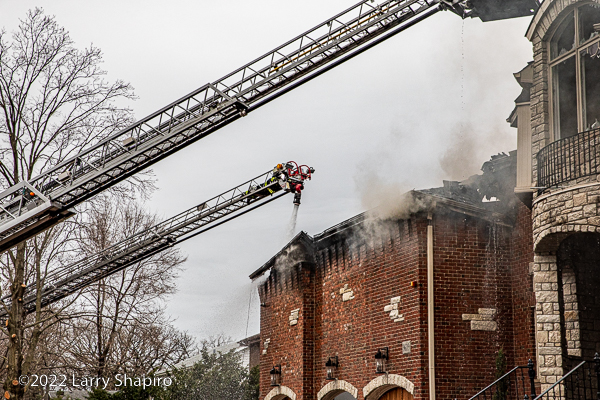
Larry Shapiro photo
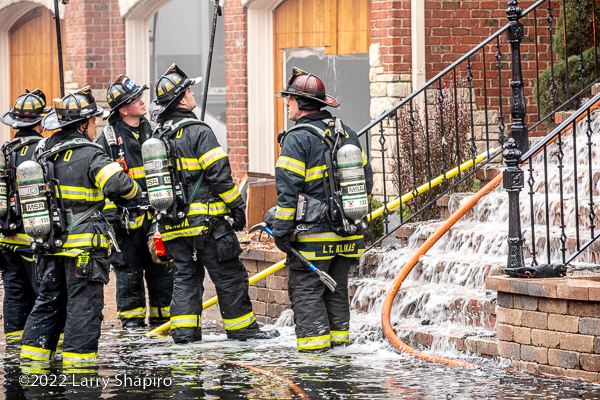
Larry Shapiro photo
Tags: #ArrowXT, #larryshapiro, chicagoareafire.com, Chicagoareafire.com/blog, Des Plaines FD Lieutenant Minas Klikas, Des Plaines FD Tower 61, Des Plaines Fire Department, large house near Des Plaines destroyed by fire, Larry Shapiro, larryshapiro.tumblr.com, larryshapiroblog.com, MetroStar, Niles FD Truck 2, Niles Fire Department, North Maine Fire Protection District, North Maine FPD Engine 1, Pierce, shapirophotography.net, short jacked aerial, Spartan

For the finest department portraits and composites contact Tim Olk or Larry Shapiro.
Arclite theme by digitalnature | powered by WordPress